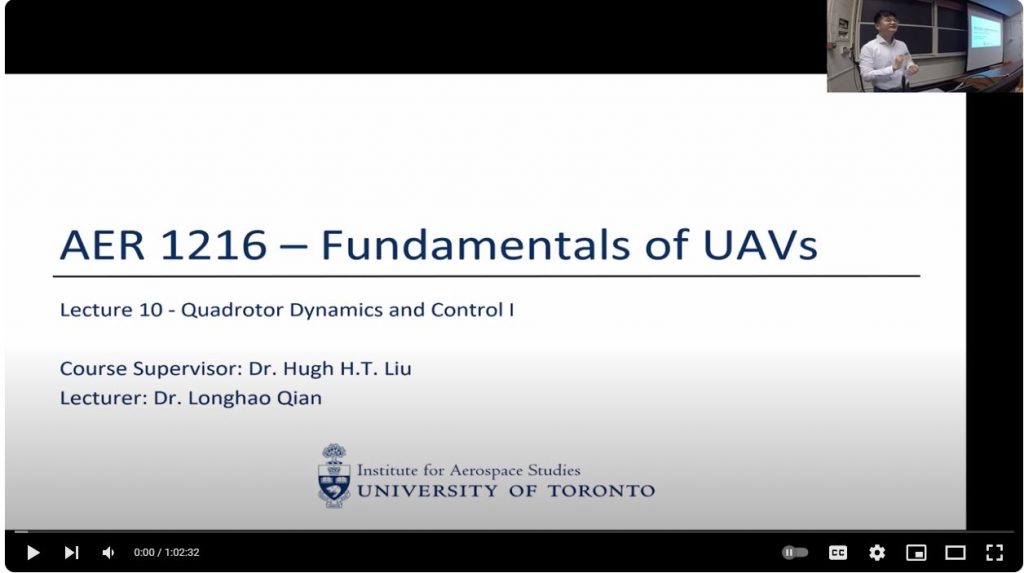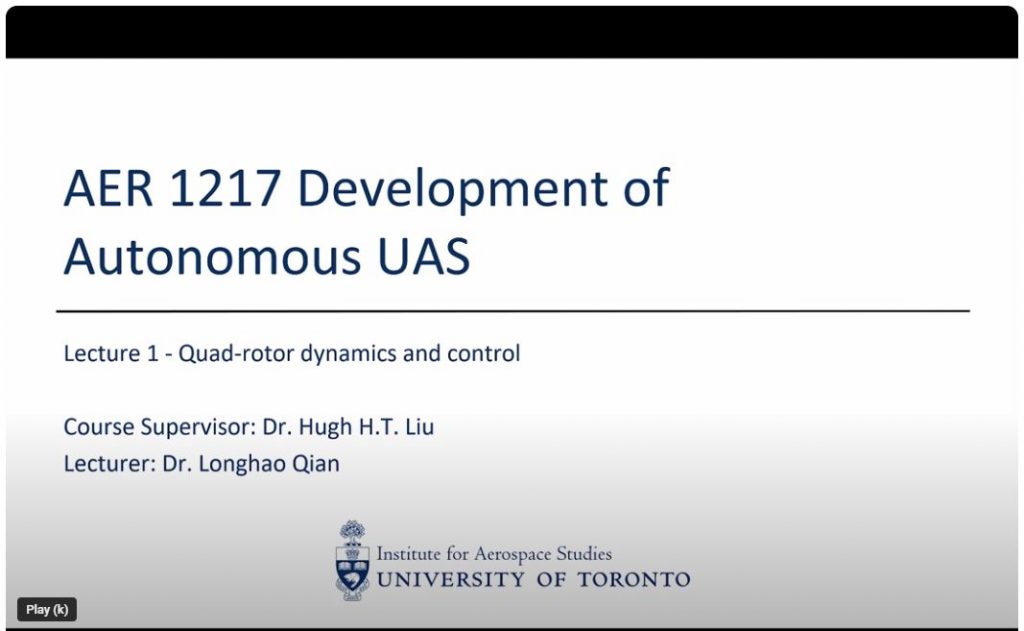Active Courses
AER1202: Advanced Flight Dynamics (Fall Term)
This is a graduate-level course to cover the (fixed-wing aircraft) flight dynamics with focus on stability and control topics. The purpose of study is to develop a comprehensive understanding of aircraft dynamic behaviour and its regulation through systematic modelling, feedback control design, and numerical simulations and analysis.
AER1216: Fundamentals of UAS (Fall Term)
Unpiloted aircraft, known as UAVs, drones or aerial robots, are very quickly becoming a major sector of the aerospace industry. They are increasingly used in aerial photography, inspection of infrastructure, delivery of small packages and other applications requiring inexpensive and flexible flight. The basic physical, scientific and engineering principles necessary to understand or design a remote-controlled fixed-wing or quad-rotor UAV are explained in this course. Some of lectures are made open access. Click the picture to view the videos.
AER1217: Autonomy of UAS (Winter Term)
This graduate course is offered as part of CARRE program in UAVs. This course is the second part of CARRE core courses, followed by AER1216: Fundamentals of UAVs, which covers the fundamental concepts related to UAV with a delivery of conceptual/preliminary design. AER1216 is the prerequisite of this course, unless approved by the instructor. In this course, the focus is placed on the development of unmanned aerial systems (UAS), with the theme of autonomy in navigation and control. This is a project oriented course. A project is defined with expectation of experimental flight demonstration. Laboratories and tutorials are designed to help students learn and develop skills step-by-step to prepare for the project, lectures are integrated to provide relevant knowledge base, with extensive coverage to broaden students’ horizons. Some of lectures are made open access. Click the picture to view the videos.
AER302: Aircraft Flight (Winter Term)
The course covers fundamental aspects of fixed-wing flight mechanics including performance, steady-state and dynamic flight characteristics, and stability and control. The course begins with an introduction to the earth’s atmosphere, aircraft anatomy, and the static and dynamic equations of motion. Important performance metrics such as range, endurance, maximum climb rate, stall speed and take-off/landing field length are derived from first principles based on simplified but reasonable physical models. Classical static and small perturbation dynamic stability analysis, including the typical lateral and longitudinal dynamic modes, is covered in depth. In addition, classical feedback control approaches for improving the dynamic behaviour of aircraft are also covered.

